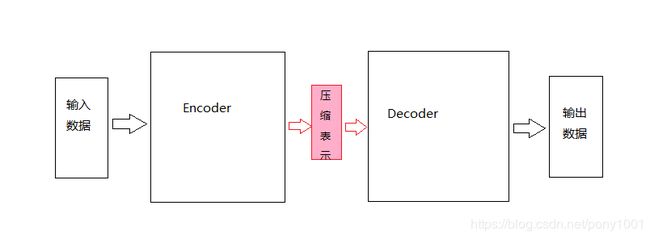- 大模型中的分词技术 BBPE
禅与计算机技术
深度学习大模型NLP深度学习nlp中文分词机器学习
一、OOV问题和多语言场景在自然语言处理(NLP)中,OOV(Out-of-Vocabulary)问题是指模型在处理文本时遇到未在词表中出现过的词汇,导致无法有效处理这些词汇的情况。这一问题在多语言场景中尤为突出,因为不同语言在词汇、语法结构和表达方式上存在显著差异,单一语言的词表难以全面覆盖多语言的复杂性。在多语言场景下的NLP任务中(如机器翻译、跨语言文本分类等),模型需要处理多种语言的混合文
- 【自然语言处理(NLP)】jieba分词的使用(分词模式、关键词提取)
道友老李
自然语言处理(NLP)自然语言处理人工智能
文章目录介绍jieba分词的使用1.安装2.jieba分词模式2.1精确模式2.2全模式2.3搜索引擎模式2.4词性标注2.5加载自己的分词文件3.查看词频4.关键词提取个人主页:道友老李欢迎加入社区:道友老李的学习社区介绍**自然语言处理(NaturalLanguageProcessing,NLP)**是计算机科学领域与人工智能领域中的一个重要方向。它研究的是人类(自然)语言与计算机之间的交互。
- python机器学习
方安乐
pythonpython机器学习人工智能
Python机器学习是当前最为热门的机器学习领域之一,其简洁、易用、高效的特点,让越来越多的开发者开始探索其应用。本文将从以下几个方面介绍Python机器学习的基础知识和实践案例,帮助读者更好地理解和应用机器学习技术。前提Python机器学习的应用领域A.图像识别和计算机视觉B.自然语言处理和文本分析C.数据挖掘和推荐系统深度学习A.神经网络的基本原理B.常用的深度学习框架和算法C.深度学习在图像
- 情感分析常见算法与模型及实现步骤
计算机软件程序设计
知识科普算法情感分析机器学习
【1】常见算法与模型情感分析(SentimentAnalysis)是一种自然语言处理(NLP)技术,用于识别和提取文本中的主观信息,如情绪、态度和意见。常见的算法和模型包括以下几种:传统机器学习方法朴素贝叶斯(NaiveBayes)基于贝叶斯定理,假设特征之间相互独立。计算简单,适用于大规模数据集。常用于文本分类任务。支持向量机(SVM)通过寻找最优超平面来划分不同的类别。在高维空间中表现良好,适
- 基于深度学习的舆论分析与检测系统应用与研究
计算机软件程序设计
机器学习深度学习人工智能舆论检测
【1】系统介绍研究背景随着互联网技术的迅猛发展和社会媒体平台的普及,信息传播的速度和范围达到了前所未有的水平。这一变化不仅极大地丰富了人们的社交生活,也为社会科学研究提供了新的视角和工具。舆论分析作为社会科学研究的一个重要分支,其目的是通过收集和分析网络上的公众意见和情感倾向,来了解人们对特定事件或话题的看法和态度。近年来,基于深度学习的自然语言处理技术取得了显著进步,这为提高舆论分析的准确性和效
- 自然语言处理(NLP)-总览图学习
汤姆和佩琦
NLP自然语言处理学习人工智能
文章目录自然语言处理(NLP)-总览图学习1.一张总览图的学习1.语音学(Phonology)2.形态学(Morphology)3.句法学(Syntax)4.语义学(Semantics)5.推理(Reasoning)小结自然语言处理(NLP)-总览图学习转自《Python自然语言处理第二版》1.一张总览图的学习这张图片展示了一个自然语言处理的流程模型,涵盖了从语音分析到应用推理和执行的多个阶段,每
- 基于Python的自然语言处理系列(2):Word2Vec(负采样)
会飞的Anthony
自然语言处理人工智能信息系统自然语言处理word2vec人工智能
在本系列的第二篇文章中,我们将继续探讨Word2Vec模型,这次重点介绍负采样(NegativeSampling)技术。负采样是一种优化Skip-gram模型训练效率的技术,它能在大规模语料库中显著减少计算复杂度。接下来,我们将通过详细的代码实现和理论讲解,帮助你理解负采样的工作原理及其在Word2Vec中的应用。1.Word2Vec(负采样)原理1.1负采样的背景在Word2Vec的Skip-g
- 【深度学习】搭建PyTorch神经网络进行气温预测
睡不着还睡不醒
深度学习深度学习pytorch神经网络
第一步数据加载与观察①导包importnumpyasnpimportpandasaspdimportmatplotlib.pyplotaspltimporttorchimporttorch.optimasoptimimportwarningswarnings.filterwarnings("ignore")%matplotlibinline②加载数据features=pd.read_csv("te
- GPT-4、GPT-4O 和 GPT-4O-mini 的区别与联系
surfirst
LLMai语言模型chatgpt
简介近年来,人工智能技术飞速发展,特别是在自然语言处理领域。GPT-4是OpenAI推出的新一代大模型,而GPT-4O和GPT-4O-mini是其优化版本,专门为不同应用场景和计算资源需求进行调整。在这篇文章中,我们将详细比较GPT-4、GPT-4O和GPT-4O-mini的区别与联系,帮助开发者更好地选择适合的模型。GPT-4是OpenAI发布的第四代通用预训练模型,具备强大的生成和理解能力,适
- PyTorch 实战教程:从模型搭建到训练的每一步
AI_小站
pytorch人工智能pythontransformer深度学习大模型LLM
用深度学习搞事情,模型搭建和训练是绕不开的两步。而PyTorch,作为一个“又灵活又好用”的深度学习框架,简直就是写代码的快乐源泉。今天我们就从0到1,实战PyTorch的模型搭建和训练流程。说白了,看完你就能自己搭个神经网络,喂点数据进去,再让它干点活。安装PyTorch要用PyTorch,得先装上它。PyTorch的安装稍微有点讲究,主要是要根据你的硬件选择CPU版本还是GPU版本。基本安装命
- 计算机视觉:卷积核
每天五分钟玩转人工智能
计算机视觉计算机视觉深度学习人工智能机器学习卷积神经网络
本文重点卷积神经网络(ConvolutionalNeuralNetwork,CNN)是一种深度学习模型,广泛应用于图像识别、自然语言处理、语音识别等领域。在卷积神经网络中,卷积核是网络的核心组件之一。通过不断堆叠卷积层和池化层,可以逐渐提取出更高级别的特征,从而实现更复杂的任务。卷积神经网络中的卷积核可以通过反向传播算法进行训练和优化,使其能够自适应地学习输入数据中的特征。因此,卷积神经网络在图像
- 国内的AI大模型有可能超过ChatGPT吗?
AIWritePaper官方账号
PromptChatGPTAIWritePaperchatgpt人工智能深度学习AI写作AIGC
这是一个非常有前瞻性和现实意义的问题。要回答国内AI是否有可能超过ChatGPT,我们需要从多个方面来分析,包括技术基础、数据资源、应用场景、政策支持以及人才储备等。以下是对这一问题的详细探讨:1.技术基础(1)现状国内AI技术:国内的AI技术发展迅速,尤其在深度学习、自然语言处理(NLP)和计算机视觉等领域已经取得了显著进展。例如,百度的文心一言、阿里的通义千问等大语言模型(LLM)已经在技术上
- Jetson Orin Nano Super之pytorch + torchvision安装
lida2003
Linux人工智能jetsonorin
JetsonOrinNanoSuper之pytorch+torchvision安装1源由2.安装pytorch2.1NVIDIA手动版本下载2.2开源自己编译版本3.安装torchvision4.参考资料1源由YoloincompatiblewithJetpack6.2(JetsonOrinNanoSuper)YoloincompatiblewithJetpack6.2(JetsonOrinNan
- 【Lora微调】提高模型效率的创新方法
@fishv
人工智能大模型微调Lora
前言在自然语言处理(NLP)和机器学习的研究和应用中,随着模型规模的不断扩大,模型训练的计算成本和存储需求也不断攀升。大型预训练模型,如GPT、BERT等,虽然在许多任务上表现出色,但它们的训练和微调通常需要巨大的计算资源,这使得许多研究者和开发者无法充分利用这些模型进行个性化或领域特定的调整。为了在保持模型性能的同时减少计算开销,**Lora(Low-RankAdaptation)**应运而生。
- Pytorch实现论文:对GAN的交替优化
LJ1147517021
GAN系列生成对抗网络计算机视觉人工智能pytorch机器学习深度学习
简介这次带来的是ClosingtheGapBetweenTheoryandPracticeDuringAlternatingOptimizationforGANs,Gans交替优化中缩小理论与实践的差距这篇论文的一个核心代码在ACGAN模型上的效果测试,核心是修改了损失函数部分的计算。作者的实验是在StyleGAN上进行的。论文简介论文题目:ClosingtheGapBetweenTheoryan
- 再分享API形式调用Dify项目应用
福安德信息科技
大模型python人工智能大模型llmdify
大模型相关目录大模型,包括部署微调prompt/Agent应用开发、知识库增强、数据库增强、知识图谱增强、自然语言处理、多模态等大模型应用开发内容从0起步,扬帆起航。RAGOnMedicalKG:大模型结合知识图谱的RAG实现DSPy:变革式大模型应用开发最简明的Few-shotPrompt指南SemanticKernel:微软大模型开发框架——LangChain替代对话大模型Prompt是否需要
- pytorch-分类-检测-分割的dataset和dataloader创建
呆呆珝
基础pytorch分类人工智能
1.前言在PyTorch中,Dataset和DataLoader是两个重要的工具,用于构建输入数据的管道。(1)Dataset是一个抽象类,表示数据集,需要实现__len__和__getitem__方法。(2)DataLoader是一个可迭代的数据加载器,它封装了数据集的加载、批处理、打乱和并行加载等功能。2.分类任务创建Dataset和DataLoader(1)对于分类任务,Dataset需要返
- 目标检测实践过程中,遇到“No module named ‘torch._six’”报错的一个快速解决方案(无需重装PyTorch)
Cold_Rain02
深度学习Python目标检测人工智能计算机视觉
很多人在按照网络、书籍教程中的流程尝试自己实现一个基于Faster-RCNN的目标检测模型时,如果调用了PyTorch官方github上的文件时,coco_eval.py文件中会触发报错。1.报错原因PyTorch在2.0之后的版本中移除了_six,导致在coco_eval.py中调用torch._six失败2.解决方案(1)直接根据代码内容修改代码我们仔细观察coco_eval.py的代码,发现
- 你知道吗?其实这些都是AI——智能聊天机器人
贫苦游商
人工智能机器人机器学习AIGC制造
智能聊天机器人AI:优化用户体验的智能助手在现代的数字化生活中,智能聊天机器人已经成为许多中国社交平台上不可或缺的一部分。这些机器人通过人工智能技术的支持,为用户提供各种互动服务,从回答常见问题到提供个性化建议,极大地提升了用户体验和平台的服务质量。智能聊天机器人AI的核心在于其强大的自然语言处理能力。通过分析用户的输入文本,这些系统能够理解用户的意图,并生成相应的回复。例如,当用户在购物平台上询
- Transformer大模型实战 BART模型的架构
AI天才研究院
大数据AI人工智能AI大模型企业级应用开发实战AI大模型应用入门实战与进阶计算科学神经计算深度学习神经网络大数据人工智能大型语言模型AIAGILLMJavaPython架构设计AgentRPA
Transformer大模型实战BART模型的架构作者:禅与计算机程序设计艺术/ZenandtheArtofComputerProgramming/TextGenWebUILLMTransformer大模型实战BART模型的架构1.背景介绍1.1问题的由来随着大规模预训练模型的兴起,如BERT、GPT系列等,研究人员发现基于Transformer架构的模型在自然语言处理任务上表现出了显著的优势。为
- 从文字到思维:呆马GPT在人工智能领域的创新之旅
呆码科技
gpt人工智能
引言生成式预训练变换器(GenerativePre-trainedTransformer,简称GPT)领域是人工智能技术中的一大革新。自OpenAI推出第一代GPT以来,该技术经历了多代发展,不断提升模型的规模、复杂度和智能化程度。GPT模型通过在大规模数据集上进行预训练,学习语言的统计规律和世界知识,然后在特定任务上进行微调,以适应不同的应用需求。GPT领域的发展推动了自然语言处理(NLP)技术
- BERT模型在情感分析中的应用:探寻文本情感的智能之路
Echo_Wish
前沿技术人工智能bert人工智能深度学习
随着互联网的普及和社交媒体的兴起,情感分析(SentimentAnalysis)已成为自然语言处理(NLP)领域的重要研究方向。情感分析通过对文本数据的分析,识别其中所表达的情感倾向(如正面、负面或中性)。近年来,BERT(BidirectionalEncoderRepresentationsfromTransformers)模型凭借其强大的上下文理解能力,在情感分析中展现出了卓越的性能。本文将深
- 想转行到人工智能领域,我该学什么,怎么学?
张登杰踩
人工智能python
转行到人工智能(AI)领域需要系统的学习和实践,以下是详细的路径建议,涵盖基础知识、技能学习、项目实践和求职准备:一、明确目标和领域方向人工智能领域广泛,建议先了解细分方向(如机器学习、深度学习、计算机视觉、自然语言处理、强化学习等),结合兴趣和职业规划选择切入点。二、构建基础知识1.数学基础线性代数:矩阵运算、特征值、向量空间。微积分:导数、梯度、优化理论。概率与统计:贝叶斯定理、分布、假设检验
- 自然语言处理的发展历程
数亦有术
自然语言处理人工智能
1.自然语言处理发展的7个阶段序号阶段时间贡献代表人物1起源期1913-1956思考使用图灵算法计量模型来描述自然语言,描述词语及词语之间的关系。这一阶段停留在理论层面做探索图灵、马尔可夫、香农2基于规则的形式语言理论期1957-1970形式语言理论的提出,开启了学术界对自然语言结构的研究、建模和解析,从而为基于结构与规则的文本识别、生成和翻译开辟了一条康庄大道诺姆·乔姆斯基、冯志伟3基于规则、概
- 【自然语言处理(NLP)】NLTK的使用(分句、分词、词频提取)
道友老李
自然语言处理(NLP)自然语言处理人工智能
文章目录介绍NLTK主要功能模块安装使用分句分词去除标点符号去除停用词stopword噪音单词,词频提取个人主页:道友老李欢迎加入社区:道友老李的学习社区介绍自然语言处理(NaturalLanguageProcessing,NLP)是计算机科学领域与人工智能领域中的一个重要方向。它研究的是人类(自然)语言与计算机之间的交互。NLP的目标是让计算机能够理解、解析、生成人类语言,并且能够以有意义的方式
- 【自然语言处理(NLP)】序列数据研究(创建序列数据、简单的MLP模型、预测结果分析)
道友老李
自然语言处理(NLP)自然语言处理人工智能
文章目录介绍序列数据研究导包安装d2l创建序列数据创建模型开始训练预测多步预测结论个人主页:道友老李欢迎加入社区:道友老李的学习社区介绍自然语言处理(NaturalLanguageProcessing,NLP)是计算机科学领域与人工智能领域中的一个重要方向。它研究的是人类(自然)语言与计算机之间的交互。NLP的目标是让计算机能够理解、解析、生成人类语言,并且能够以有意义的方式回应和操作这些信息。N
- Swin-Unet:图像分割领域的强大工具
陈凯韵
Swin-Unet:图像分割领域的强大工具【下载地址】Swin-UnetPyTorch代码仓库本仓库提供了一个基于PyTorch实现的Swin-Unet模型的代码资源。Swin-Unet是一种结合了SwinTransformer和U-Net结构的深度学习模型,适用于图像分割任务。该代码可以帮助研究人员和开发者快速上手并应用Swin-Unet模型进行图像分割实验项目地址:https://gitcod
- 李开复:苹果发布AI应用的未来
AI大模型应用之禅
计算机软件编程原理与应用实践javapythonjavascriptkotlingolang架构人工智能
苹果,AI,应用,未来,深度学习,自然语言处理,计算机视觉1.背景介绍近年来,人工智能(AI)技术取得了飞速发展,并开始渗透到人们生活的方方面面。从智能手机的语音助手到自动驾驶汽车,AI正在改变着我们的世界。作为科技巨头,苹果也积极布局AI领域,并将其融入到其产品和服务中。2017年,苹果发布了其首款AI芯片A11Bionic,并将其应用于iPhoneX等产品。该芯片拥有强大的神经网络处理能力,为
- 使用 Spring AI 调用本地 模型实现
drebander
AI编程springjavaspringAI
在本篇博客中,我们将学习如何使用SpringAI框架调用本地的PyTorch模型,并通过SpringBoot提供一个预测接口。SpringAI是一个用于将人工智能应用集成到Spring生态系统中的框架,它支持多种AI模型和数据源的集成,帮助开发者将AI模型无缝地集成到Java应用中。1.准备PyTorch模型首先,我们需要训练并保存一个PyTorch模型。这里我们使用一个简单的神经网络模型作为示例
- 计算广告(一)
爱学习的菜鸟罢了
搜广推人工智能
计算广告学是一个十分庞大的学科,里面涵盖了自然语言处理、机器学习、推荐系统等众多研究方向。而且广告作为互联网行业的三大盈利模式(广告、电商、游戏)之一,也是这三大模式中最有技术含量的,计算广告学一直都吸引着无数学术界/工业界的精英投入其中(ps:计算广告学也是机器学习在商业界最成功的应用之一)。行业分类例子盈利搜索引擎Google百度广告社交网络腾讯facebook广告增值服务游戏电商网站亚马逊阿
- PHP如何实现二维数组排序?
IT独行者
二维数组PHP排序
二维数组在PHP开发中经常遇到,但是他的排序就不如一维数组那样用内置函数来的方便了,(一维数组排序可以参考本站另一篇文章【PHP中数组排序函数详解汇总】)。二维数组的排序需要我们自己写函数处理了,这里UncleToo给大家分享一个PHP二维数组排序的函数:
代码:
functionarray_sort($arr,$keys,$type='asc'){
$keysvalue= $new_arr
- 【Hadoop十七】HDFS HA配置
bit1129
hadoop
基于Zookeeper的HDFS HA配置主要涉及两个文件,core-site和hdfs-site.xml。
测试环境有三台
hadoop.master
hadoop.slave1
hadoop.slave2
hadoop.master包含的组件NameNode, JournalNode, Zookeeper,DFSZKFailoverController
- 由wsdl生成的java vo类不适合做普通java vo
darrenzhu
VOwsdlwebservicerpc
开发java webservice项目时,如果我们通过SOAP协议来输入输出,我们会利用工具从wsdl文件生成webservice的client端类,但是这里面生成的java data model类却不适合做为项目中的普通java vo类来使用,当然有一中情况例外,如果这个自动生成的类里面的properties都是基本数据类型,就没问题,但是如果有集合类,就不行。原因如下:
1)使用了集合如Li
- JAVA海量数据处理之二(BitMap)
周凡杨
java算法bitmapbitset数据
路漫漫其修远兮,吾将上下而求索。想要更快,就要深入挖掘 JAVA 基础的数据结构,从来分析出所编写的 JAVA 代码为什么把内存耗尽,思考有什么办法可以节省内存呢? 啊哈!算法。这里采用了 BitMap 思想。
首先来看一个实验:
指定 VM 参数大小: -Xms256m -Xmx540m
- java类型与数据库类型
g21121
java
很多时候我们用hibernate的时候往往并不是十分关心数据库类型和java类型的对应关心,因为大多数hbm文件是自动生成的,但有些时候诸如:数据库设计、没有生成工具、使用原始JDBC、使用mybatis(ibatIS)等等情况,就会手动的去对应数据库与java的数据类型关心,当然比较简单的数据类型即使配置错了也会很快发现问题,但有些数据类型却并不是十分常见,这就给程序员带来了很多麻烦。
&nb
- Linux命令
510888780
linux命令
系统信息
arch 显示机器的处理器架构(1)
uname -m 显示机器的处理器架构(2)
uname -r 显示正在使用的内核版本
dmidecode -q 显示硬件系统部件 - (SMBIOS / DMI)
hdparm -i /dev/hda 罗列一个磁盘的架构特性
hdparm -tT /dev/sda 在磁盘上执行测试性读取操作
cat /proc/cpuinfo 显示C
- java常用JVM参数
墙头上一根草
javajvm参数
-Xms:初始堆大小,默认为物理内存的1/64(<1GB);默认(MinHeapFreeRatio参数可以调整)空余堆内存小于40%时,JVM就会增大堆直到-Xmx的最大限制
-Xmx:最大堆大小,默认(MaxHeapFreeRatio参数可以调整)空余堆内存大于70%时,JVM会减少堆直到 -Xms的最小限制
-Xmn:新生代的内存空间大小,注意:此处的大小是(eden+ 2
- 我的spring学习笔记9-Spring使用工厂方法实例化Bean的注意点
aijuans
Spring 3
方法一:
<bean id="musicBox" class="onlyfun.caterpillar.factory.MusicBoxFactory"
factory-method="createMusicBoxStatic"></bean>
方法二:
- mysql查询性能优化之二
annan211
UNIONmysql查询优化索引优化
1 union的限制
有时mysql无法将限制条件从外层下推到内层,这使得原本能够限制部分返回结果的条件无法应用到内层
查询的优化上。
如果希望union的各个子句能够根据limit只取部分结果集,或者希望能够先排好序在
合并结果集的话,就需要在union的各个子句中分别使用这些子句。
例如 想将两个子查询结果联合起来,然后再取前20条记录,那么mys
- 数据的备份与恢复
百合不是茶
oraclesql数据恢复数据备份
数据的备份与恢复的方式有: 表,方案 ,数据库;
数据的备份:
导出到的常见命令;
参数 说明
USERID 确定执行导出实用程序的用户名和口令
BUFFER 确定导出数据时所使用的缓冲区大小,其大小用字节表示
FILE 指定导出的二进制文
- 线程组
bijian1013
java多线程threadjava多线程线程组
有些程序包含了相当数量的线程。这时,如果按照线程的功能将他们分成不同的类别将很有用。
线程组可以用来同时对一组线程进行操作。
创建线程组:ThreadGroup g = new ThreadGroup(groupName);
&nbs
- top命令找到占用CPU最高的java线程
bijian1013
javalinuxtop
上次分析系统中占用CPU高的问题,得到一些使用Java自身调试工具的经验,与大家分享。 (1)使用top命令找出占用cpu最高的JAVA进程PID:28174 (2)如下命令找出占用cpu最高的线程
top -Hp 28174 -d 1 -n 1
32694 root 20 0 3249m 2.0g 11m S 2 6.4 3:31.12 java
- 【持久化框架MyBatis3四】MyBatis3一对一关联查询
bit1129
Mybatis3
当两个实体具有1对1的对应关系时,可以使用One-To-One的进行映射关联查询
One-To-One示例数据
以学生表Student和地址信息表为例,每个学生都有都有1个唯一的地址(现实中,这种对应关系是不合适的,因为人和地址是多对一的关系),这里只是演示目的
学生表
CREATE TABLE STUDENTS
(
- C/C++图片或文件的读写
bitcarter
写图片
先看代码:
/*strTmpResult是文件或图片字符串
* filePath文件需要写入的地址或路径
*/
int writeFile(std::string &strTmpResult,std::string &filePath)
{
int i,len = strTmpResult.length();
unsigned cha
- nginx自定义指定加载配置
ronin47
进入 /usr/local/nginx/conf/include 目录,创建 nginx.node.conf 文件,在里面输入如下代码:
upstream nodejs {
server 127.0.0.1:3000;
#server 127.0.0.1:3001;
keepalive 64;
}
server {
liste
- java-71-数值的整数次方.实现函数double Power(double base, int exponent),求base的exponent次方
bylijinnan
double
public class Power {
/**
*Q71-数值的整数次方
*实现函数double Power(double base, int exponent),求base的exponent次方。不需要考虑溢出。
*/
private static boolean InvalidInput=false;
public static void main(
- Android四大组件的理解
Cb123456
android四大组件的理解
分享一下,今天在Android开发文档-开发者指南中看到的:
App components are the essential building blocks of an Android
- [宇宙与计算]涡旋场计算与拓扑分析
comsci
计算
怎么阐述我这个理论呢? 。。。。。。。。。
首先: 宇宙是一个非线性的拓扑结构与涡旋轨道时空的统一体。。。。
我们要在宇宙中寻找到一个适合人类居住的行星,时间非常重要,早一个刻度和晚一个刻度,这颗行星的
- 同一个Tomcat不同Web应用之间共享会话Session
cwqcwqmax9
session
实现两个WEB之间通过session 共享数据
查看tomcat 关于 HTTP Connector 中有个emptySessionPath 其解释如下:
If set to true, all paths for session cookies will be set to /. This can be useful for portlet specification impleme
- springmvc Spring3 MVC,ajax,乱码
dashuaifu
springjquerymvcAjax
springmvc Spring3 MVC @ResponseBody返回,jquery ajax调用中文乱码问题解决
Spring3.0 MVC @ResponseBody 的作用是把返回值直接写到HTTP response body里。具体实现AnnotationMethodHandlerAdapter类handleResponseBody方法,具体实
- 搭建WAMP环境
dcj3sjt126com
wamp
这里先解释一下WAMP是什么意思。W:windows,A:Apache,M:MYSQL,P:PHP。也就是说本文说明的是在windows系统下搭建以apache做服务器、MYSQL为数据库的PHP开发环境。
工欲善其事,必须先利其器。因为笔者的系统是WinXP,所以下文指的系统均为此系统。笔者所使用的Apache版本为apache_2.2.11-
- yii2 使用raw http request
dcj3sjt126com
http
Parses a raw HTTP request using yii\helpers\Json::decode()
To enable parsing for JSON requests you can configure yii\web\Request::$parsers using this class:
'request' =&g
- Quartz-1.8.6 理论部分
eksliang
quartz
转载请出自出处:http://eksliang.iteye.com/blog/2207691 一.概述
基于Quartz-1.8.6进行学习,因为Quartz2.0以后的API发生的非常大的变化,统一采用了build模式进行构建;
什么是quartz?
答:简单的说他是一个开源的java作业调度框架,为在 Java 应用程序中进行作业调度提供了简单却强大的机制。并且还能和Sp
- 什么是POJO?
gupeng_ie
javaPOJO框架Hibernate
POJO--Plain Old Java Objects(简单的java对象)
POJO是一个简单的、正规Java对象,它不包含业务逻辑处理或持久化逻辑等,也不是JavaBean、EntityBean等,不具有任何特殊角色和不继承或不实现任何其它Java框架的类或接口。
POJO对象有时也被称为Data对象,大量应用于表现现实中的对象。如果项目中使用了Hiber
- jQuery网站顶部定时折叠广告
ini
JavaScripthtmljqueryWebcss
效果体验:http://hovertree.com/texiao/jquery/4.htmHTML文件代码:
<!DOCTYPE html>
<html xmlns="http://www.w3.org/1999/xhtml">
<head>
<title>网页顶部定时收起广告jQuery特效 - HoverTree<
- Spring boot内嵌的tomcat启动失败
kane_xie
spring boot
根据这篇guide创建了一个简单的spring boot应用,能运行且成功的访问。但移植到现有项目(基于hbase)中的时候,却报出以下错误:
SEVERE: A child container failed during start
java.util.concurrent.ExecutionException: org.apache.catalina.Lif
- leetcode: sort list
michelle_0916
Algorithmlinked listsort
Sort a linked list in O(n log n) time using constant space complexity.
====analysis=======
mergeSort for singly-linked list
====code======= /**
* Definition for sin
- nginx的安装与配置,中途遇到问题的解决
qifeifei
nginx
我使用的是ubuntu13.04系统,在安装nginx的时候遇到如下几个问题,然后找思路解决的,nginx 的下载与安装
wget http://nginx.org/download/nginx-1.0.11.tar.gz
tar zxvf nginx-1.0.11.tar.gz
./configure
make
make install
安装的时候出现
- 用枚举来处理java自定义异常
tcrct
javaenumexception
在系统开发过程中,总少不免要自己处理一些异常信息,然后将异常信息变成友好的提示返回到客户端的这样一个过程,之前都是new一个自定义的异常,当然这个所谓的自定义异常也是继承RuntimeException的,但这样往往会造成异常信息说明不一致的情况,所以就想到了用枚举来解决的办法。
1,先创建一个接口,里面有两个方法,一个是getCode, 一个是getMessage
public
- erlang supervisor分析
wudixiaotie
erlang
当我们给supervisor指定需要创建的子进程的时候,会指定M,F,A,如果是simple_one_for_one的策略的话,启动子进程的方式是supervisor:start_child(SupName, OtherArgs),这种方式可以根据调用者的需求传不同的参数给需要启动的子进程的方法。和最初的参数合并成一个数组,A ++ OtherArgs。那么这个时候就有个问题了,既然参数不一致,那
